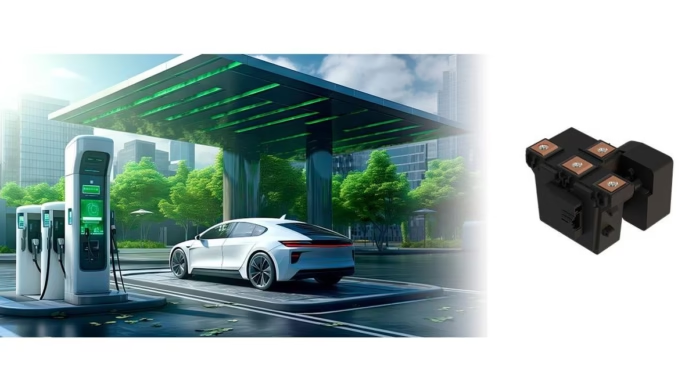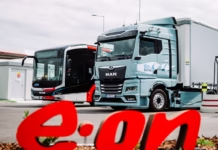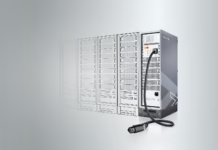Navigating the EV Charging Landscape
The electric vehicle (EV) industry is undergoing rapid evolution as it shifts toward higher-voltage architectures. Primarily 800V systems, to support faster charging and improved performance. However, this transition introduces compatibility challenges with the widespread existing 400V charging infrastructure. Solutions enabling smooth interoperability between these systems are pivotal to accelerating EV adoption while maintaining convenience and cost-effectiveness for consumers. A key development in this space is Sensata Technologies’ recent launch of the High Efficiency Contactor (HEC). A device designed to bridge the gap between legacy 400V and next-generation 800V electric vehicle configurations.
With global electric vehicle sales surging and governments pushing for greener transportation, seamless charging solutions carry strategic importance. Sensata’s new HEC product enhances the EV ecosystem by facilitating safe, efficient, and flexible charging across different voltage standards. This innovation also underscores broader trends in the EV market focusing on simplification, safety, and optimization of battery management. All critical for the continued growth of electrified mobility technologies.
Breaking Barriers Between 400V and 800V EV Systems
Sensata’s High Efficiency Contactor represents a major breakthrough in simplifying the transition between 400V and 800V battery architectures. Traditionally, 800V EVs face challenges when charging at existing 400V stations, often requiring costly boost converters. The HEC circumvents this necessity by enabling direct, safe, and efficient battery reconfiguration between the two voltage levels. This capability ensures legacy charging infrastructure remains valid and practical as manufacturers push for faster charging speeds and higher system voltages.
Moreover, the HEC is engineered for compatibility with both current and next-generation charging infrastructure. It supports various battery configurations, such as Series (800V), Parallel (400V), and Open-Isolated modes. Enables automakers to design versatile battery systems without sacrificing performance or safety.
Enhancing Battery Life and Reliability with Independent Pack Access
One of the hallmark features of Sensata’s HEC is its ability to independently access each of the two 400V battery packs. This is crucial for advanced functions such as battery balancing and limp-home modes. Battery pack imbalance, which arises from uneven aging or usage patterns, is a significant issue in modern 800V EVs and can lead to decreased performance or sudden loss of drive capability.
By allowing selective isolation of individual battery packs, the HEC helps mitigate these risks, improving battery longevity and vehicle reliability. It significantly reduces the risk of a vehicle being stranded due to pack failure and supports critical emergency driving modes that extend usability. This level of battery management sophistication addresses growing consumer demands for reliability and resilient EV performance.
Industry-Leading Safety and Efficiency in a Compact Design
Sensata’s device integrates three high-voltage contactor poles into a patented design with mechanically synchronized contacts. This unique mechanism almost entirely eliminates the risk of short circuits common in traditional battery switching systems, which can result from software faults, welded contacts, or physical shocks. By providing an inherently safe switching operation, the HEC sets new benchmarks for reliability in high-voltage EV systems.
Additionally, the HEC boasts an ultra-low contact resistance of less than 50 micro-ohms, reducing energy loss and heat generation to negligible levels. Its bi-stable design also removes the need for holding power, improving overall energy efficiency and system simplicity. Compact and lightweight, it reduces the component count by over 50% compared to conventional systems, and requires no extra cooling equipment, benefiting vehicle packaging and cost.
Versatility for Future EV and Energy Ecosystems
Beyond 400V/800V battery reconfiguration, the HEC supports cutting-edge vehicular functions like Vehicle-to-Grid (V2G) systems and megawatt-level fast charging, along with compatibility with standards like the North American Charging Standard (NACS/J3400). These capabilities highlight the device’s versatility to support a wide range of high-performance, safety-critical applications as electrification expands across transportation and energy sectors.
Integration of an ASIL-D compliant position sensor enables real-time diagnostics, offering manufacturers and users enhanced monitoring and safety features. Such advanced diagnostic capabilities align with increasing regulatory and consumer demands for transparency and operational safety in EV technology.
Market and Technological Impact
Sensata’s HEC launch confirms its commitment to addressing real-world electrification challenges with innovative and efficient solutions. This component is a strategic enabler of faster EV charging infrastructure deployment, improving interoperability between different voltage architectures without excessive cost or complexity. The product meets evolving market needs driven by accelerated EV adoption and increased demand for scalability, reliability, and safety.
As more EV manufacturers adopt 800V architectures for better performance, components like the HEC will play a critical role in ensuring smooth user experiences and broad acceptance of advanced charging technologies. Innovations like this will contribute significantly to reducing carbon emissions and enhancing the sustainability of transportation worldwide.
Paving the Way for Next-Generation Electric Vehicles
Sensata Technologies’ High Efficiency Contactor sets a new standard for safe, efficient, and flexible electric vehicle battery management. Its ability to seamlessly reconfigure battery voltages from 400V to 800V, combined with advanced safety features and support for critical battery functions, addresses key challenges within modern EVs. This innovation not only guarantees compatibility between legacy and future charging systems but also enhances battery health and vehicle reliability—essential for accelerating EV market growth.
By reducing component complexity and improving energy efficiency, the HEC enables automakers to deliver safer, more practical electric vehicles equipped for the demands of tomorrow’s mobility landscape. Sensata’s breakthrough contributes to a more accessible and connected electric vehicle future where faster charging and longer battery life become the norm. This technology innovation is a pivotal step toward realizing widespread EV adoption and the global transition to clean energy transportation.







